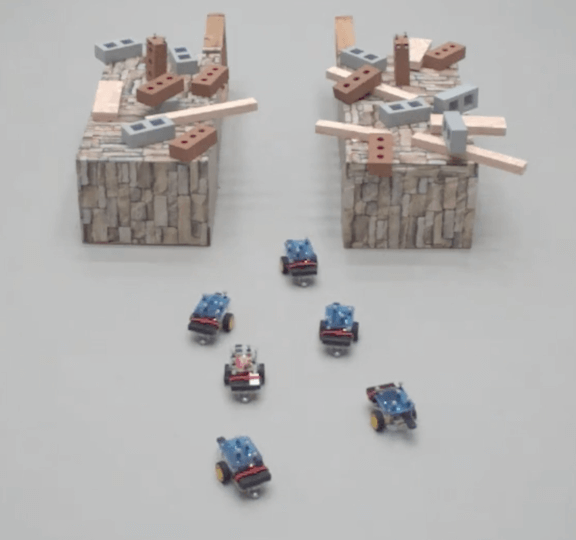News
A new control mechanism allows teams of robots (above) to calculate the tradeoffs of maintaining a communication network and move through difficult terrain, including narrow hallways. (Credit: REACT Lab/Harvard SEAS)
A robot, or a group of robots, on a mission often have conflicting priorities. The primary mission of a team of search and rescue robots, for example, is to find survivors. But when they do, they also need to be able to send information to the rest of the team. The best way to find survivors may be to spread out, but the best way to send information is to stay close together. If robotic teams are going to be deployed in more real-world situations, they’re going to need a system to balance these priorities.
Computer scientists at the Harvard John A. Paulson School of Engineering and Applied Sciences (SEAS) have developed a new control mechanism for robotic teams that allow them to automatically calculate the tradeoffs of maintaining a resilient communication network and achieving their primary goal of moving through an environment. The team calculated which types of environments a robotic team could navigate while maintaining communication and which environments would force a team to break communication.
“We wanted to understand and analyze the tradeoff between making progress and maintaining a resilient communication network and build a control mechanism that can deal with those tradeoffs without deadlocking the robotic team,” said Stephanie Gil, Assistant Professor of Computer Science at SEAS and senior author of the paper.
The research was presented recently at the Robotics: Science and Systems conference, where it was selected as a finalist for best paper.
In multi-robot systems, communication is often dependent on the distance between individual robots. Many robotic teams use networked communication, relaying signals from one robot to another to cover increased distance between team members.
“A resilient communication network has multiple paths of communication between any robot on the team to any other and so even if multiple robots were to fail, there are other ways to pass the information,” said Matthew Cavorsi, a graduate student at SEAS and first author of the paper.
SEAS researchers developed a new control mechanism for robotic teams maintaining a resilient communication network while moving through an environment.
These resilient robotic systems need to maintain specific formations with certain distances between each robot to keep those multiple paths of communications open. But what happens when an environment, such as a narrow hallway, constricts the formation? If the robotic team is forced into a single-file line, the resiliency of the network breaks down because there is only one path along which to send a signal.
“If the communication network presents single points of failure, then this multi-robot system becomes very fragile,” said Lorenzo Sabattini, Associate Professor of Robotics at the University of Modena and Reggio Emilia in Italy and co-author of the paper. “Our work aims at removing this issue by determining when the system can maintain resiliency and achieve its goal, when resiliency and the goal are incompatible, and how the system can regain resiliency as quickly as possible after having to temporarily break it, thus paving the way towards reliable real-world application of multi-robot systems.”
The team identified a cut-off point where the robotic team is connected enough to be resilient. Through models and experiments, the team demonstrated that the control mechanism can compute the connectedness of the team as it moves and makes adjustments to keep it within the threshold.
Cavorsi developed two types of controls: one where resiliency is a soft constraint and one where resiliency is a hard constraint.
If a multi-robot system with resiliency as a soft constraint encounters an environment that would force it to drop below the resiliency threshold, such as a narrow hallway or large boulder, it will break resiliency long enough to move through the environment. If resiliency is a hard constraint, the system will turn back or find another way through the environment that doesn’t require it to break resiliency.
Soft constraint resiliency could work well for search and rescue robots where achieving the goal of finding survivors is worth the risk of temporarily weakening their communications. Resiliency could be more important for robotic systems on Mars, for example, where maintaining communications and avoiding dangerous obstacles is critical to the mission.
Multi-robot teams may one day provide assistance to traditional rescue efforts.
The research was co-authored by Beatrice Capelli and Lorenzo Sabattini. It was funded in part by the Office of Naval Research Young Investigator Program under grant number N00014-21-1-2714.
Topics: AI / Machine Learning, Computer Science, Robotics
Cutting-edge science delivered direct to your inbox.
Join the Harvard SEAS mailing list.
Press Contact
Leah Burrows | 617-496-1351 | lburrows@seas.harvard.edu



